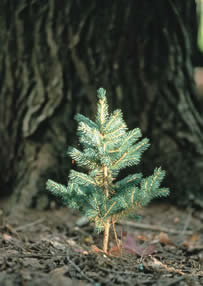Alu- Timber Sustainable Strategy

All of the components within Alu-Timber are sourced with the key directive of minimising both waste in their production and their impact on the environment. There are four main elements of Alu-Timbers sustainable strategy
1. Sustainably Sourced Timber
All engineered timbers (Larch, Redwood, Eucalyptus) are farmed from sustainable managed forests compliant with FSC, PEFC accreditations. However, the cut timber is still a valuable resource and its use must be maximised. With this in mind engineered timbers create minimal wastage. The timber is selected at three different lengths 300mm, 1200mm and 1800mm and finger jointed together to the desired length; this ensures that more of the timber can be used. The timber is laminate bonded together with formaldehyde free polyurethane adhesives and a water soluble environmentally friendly lacquer is applied which is fully comparable with natural wood. If solid timbers, such as Oak, are required, certification from PEFC or FSC ensures the responsible farming and re-planting strategies are used.
2. Aluminium Longevity
Aluminium provides durability, is corrosion resistant and has a high strength
to weight ratio meaning that less can be used to create the desired profile.
Aluminium is produced from Bauxite, one of the most abundant minerals
in the earth’s crust. Sustainability concerns are alleviated by
the knowledge that we have at least 300 years of known reserves of Bauxite,
and this does not allow for the fact that 75% of all aluminium used in
construction is from recycled sources. With an ever increasing proportion
of re-cycled material in use, aluminium can be accurately described as
the ultimate sustainable material. Producing aluminium is an energy intensive
procedure. However, two-thirds of the energy required to extract aluminium
is supplied by environmentally friendly, hydroelectric power. Aluminium
is polyester powder coated or anodised. With minimal maintenance its design
life is almost limitless.
3. Merging Materials to Provide a Design for Life
Alu-Timbers design means that the aluminium completely protects the internal
timber, no water can penetrate on to the timber. Even the corner jointing
is designed so no raw edges are exposed to the elements. This provides
the ultimate in sustainability: longevity a facade material that will
last for future generations. Alu-Timber has a design life of 40 years.
4. End of Life
All components within Alu-Timber can be reclaimed and have an end of life
use. The timber and aluminium can be separated and recycled. The aluminium
element is 100% recyclable, with no loss to its properties. The highly
developed scrap aluminium industry is evidence of aluminium’s end
of life high value. Used aluminium is valuable and is easily and endlessly
recycled without quality loss. The timber element can be recycled and
is traditionally used in the wood chip board industry. Alternatively,
it can be chipped and composted or can be used to fire commercial combustion
systems in the wood working or lumber industries. Accessories can be stripped
down to their residual components and recycled accordingly.

